I tried working out with a Pilates ring for two weeks - and how I got on might surprise you
It's not dubbed the ring of fire for nothing
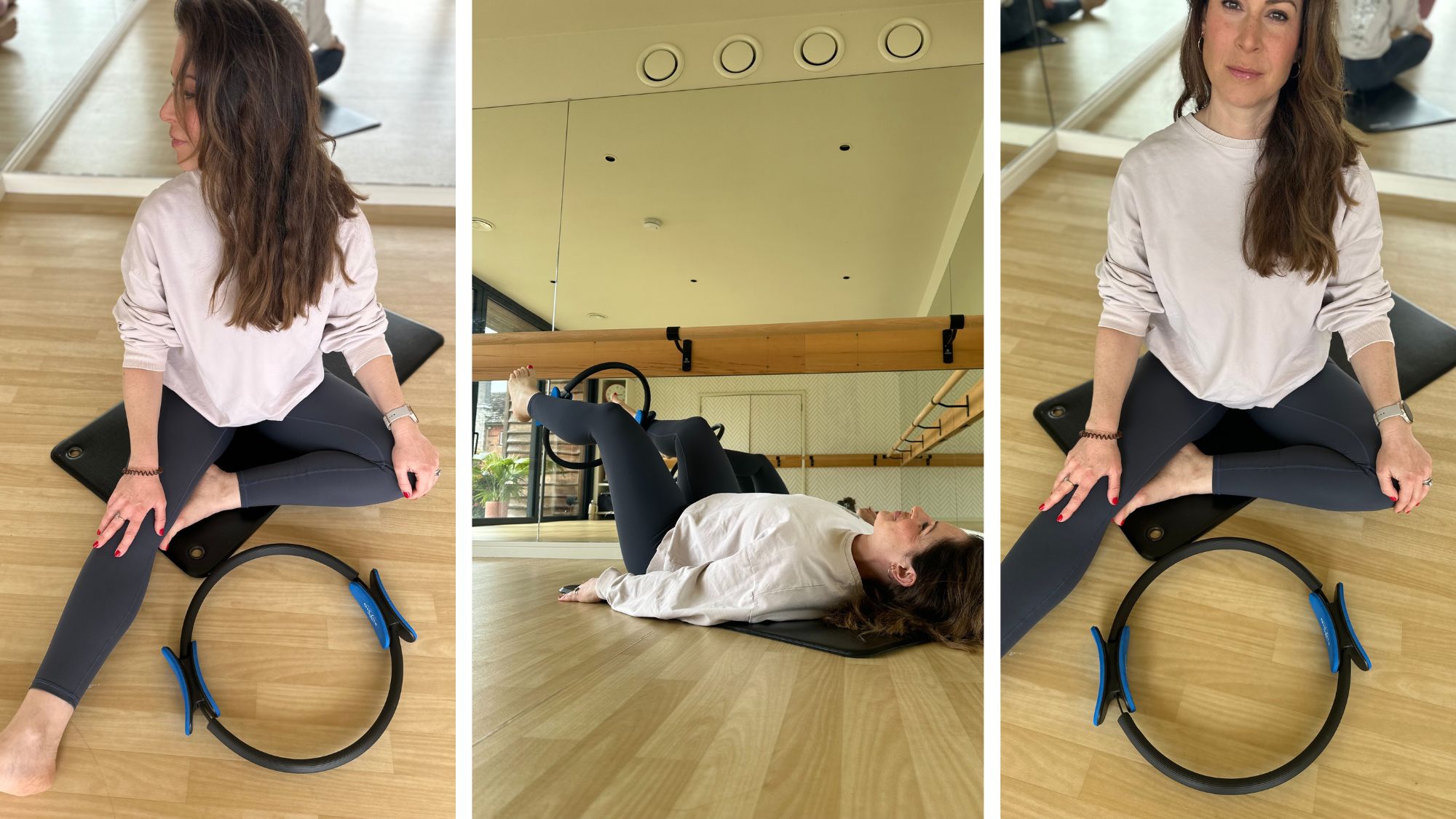

Of all the different workouts I do, over the past several months, Pilates workouts have fast become my favourite. While I’ve dabbled in the practice for around nine years, I’d never really been consistent with it – and (as we all know) when it comes to fitness, consistency is key. That's why, when MC UK Senior Health Editor Ally Head asked me to write a Pilates ring review, I jumped at the chance.
You see, I can’t go more than a couple of days without hopping into a Pilates class these days - whether that’s (for the most part) online or IRL. I’ve long been a fan of a Reformer Pilates class, finding the deep stretches a balm for my tightrope-taut hip flexors (thanks, running and spin), wonky alignment and less-than-ideal flexibility.
However, I’d never thought to include any equipment in my home Pilates workouts until now, assuming that it’s all hefty and expensive, like the currently trending at-home Reformer Pilates machines. But not Pilates rings, which start from around £7.99 and promise to up the intensity of your home workouts and help you reap the many benefits of Pilates, too.
So, question: could this small piece of kit really up the ante on the mat? I couldn’t wait to find out. Read on to discover how I got on – and while you’re here, you might be interested to read our guide to the best Pilates exercises for beginners, whether there’s any truth to the claim that Pilates can transform your body, and find out how the best Pilates sliders can level up any workout. Don't miss our guides to the best Pilates clothes, along with the best Pilates tops, best Pilates socks and the best unitards, as well as the best ankle weights, best wrist weights, and best Pilates bars while you're at it.
Pilates rings: Quick shopping links
- Core Balance Pilates Resistance Ring - £14.44 at Amazon (was £16.99, save 15%)
- Phoenix Fitness Black Pilates Ring - £10.79 at Amazon (was £11.99, save 10%)
- Beenax Pilates Ring - £15.99 at Amazon
- CampTeck Double Handled Pilates Ring - £10.99 at Amazon
- Stretch Happy Pilates Ring and Ball Equipment - £24.99 at Amazon
- Fortitude Sports Pilates Ring - £17.95 at Amazon
My honest Pilates ring review? I have some thoughts
What is a Pilates ring?
Also known as a magic circle or Pilates circle, a Pilates ring is essentially a hollow circular ring with padded handles (think a steering wheel with pads).
“The Pilates magic circle, or ring of fire, as I like to call it in my classes, is a small, lightweight metal or plastic ring with foam pads on either side, about 13 inches in diameter,” explains Pilates instructor and founder of East of Eden, Abby McLachlan. “It can be used to add an extra challenge to Pilates exercises on the mat or Reformer, and it can be used in a multitude of ways with a variety of different benefits - impressive for such a small and inexpensive piece of equipment.”
Lightweight and small in size, a Pilates ring can be used to either intensify movements or modify and assist your moves, and it’s a space-saving way of recreating equipment-based moves at home, mimicking the feel of Reformer resistance (because who has space for a full Reformer machine, right?)
Marie Claire Newsletter
Celebrity news, beauty, fashion advice, and fascinating features, delivered straight to your inbox!
What are the benefits of using a Pilates ring?
While the Pilates ring looks innocuous, it’s the definition of small but mighty, packing a proper punch, benefits-wise. Before I start my challenge, I asked McLachlan what to expect.
1. It adds intensity to moves
“There are many benefits of adding a magic circle to your Pilates workout,” McLachlan tells MC UK. “It adds extra intensity to exercises – for example, try it between your inner thighs to challenge your adductors, or outer thighs for abductors.”
If you’ve ever experienced the infamous Pilates shake, using a Pilates ring during your dead bugs, fire hydrants and so on will add resistance and therefore even more wobble!
2. It offers feedback on your practice
One of the (few) downsides of working out at home is that, unless you’re a seasoned pro, it can be hard to tell if you’re performing moves correctly. Consider the Pilates ring your virtual coach.
“You can use the circle to establish better posture,” says McLachlan. “Plus, it can give valuable feedback on certain exercises. If you know you struggle with alignment, try using the ring to keep you level. For example, having one hand on the ring outside your front bent leg for reformer lunges helps keep your hips level.”
@amandablauerpilates ♬ PUNTO 40 - Rauw Alejandro & Baby Rasta
3. It challenges co-ordination and balance
As if Pilates wasn’t technical enough, use the ring wisely and you’ll engage those all-important stabilising muscles even more intensely.
“If you want to challenge your coordination and balance in your practice, try extending your arms in front or behind you while doing your leg work,” advises McLachlan. “Whether this is on the mat or Reformer, it’ll add an extra balance challenge, enhancing core strength at the same time.”
Will I see results in a fortnight?
So far, so tempting – but will I really notice a difference within two weeks? The experts are optimistic that I very well may do.
“It’s perfectly possible to see results within two weeks, if you’re using the ring daily,” assures Pilates coach Stacy Weeks. “It's one of the most beneficial pieces of kit you can have to use at home – you’ll be stronger, more flexible and start to see some tone if you are using it daily for two weeks.”
@natalieroseuk ♬ 3 15 - ✿
Which workouts can I use a Pilates ring for?
Ring procured, I’m ready to get started – so I turn to the experts for some advice on how I can incorporate the ring into my usual Pilates practice. And they have good news: it’s easy to add to all my sessions.
“You can add the magic circle to every Pilates session you do if you choose,” advises McLachlan. “Even better, because Pilates is a low impact workout, it can be done more frequently than other forms of exercise as it doesn't require as much recovery between sessions.”
A super-versatile piece of kit, the ring is perfect to incorporate into classical Pilates moves such as the Hundred (a personal favourite of mine), back extension, chest expansion, leg circles and more.
I used a Pilates ring for two weeks – here’s my honest review
Week one
I always do a Pilates workout on a Monday, so on day one I began by searching for a ten-minute Pilates ring workout - there are loads of great (free!) Pilates workouts at home to choose from online. Figuring ten minutes was a nice way to ease myself in, I focussed on form and technique, targeting my inner thighs with leg squeezes (ring in between my thighs), my core with Pilates roll-ups (holding the ring at shoulder height in front of me) and my back, lying on my front with my arms outstretched (circle standing upright with one pad on the mat).
I’ll start by saying, this challenge was a humbling experience for me. Fairly confident in my strength and fitness level, I naively assumed that I’d segue seamlessly from move to move, completing the reps like a pro. Reader, this is very much not what happened. Whereas usually, I’d happily work on sets of ten reps fairly comfortably, with the ring involved – I was struggling to hit three reps. Who knew something so small could be so effective?
Well – the experts. “There’s a reason it’s known as the burning ring of fire,” Weeks reassured me. With this in mind, I vowed to go back to basics for my next session, choosing a beginner class. Noting that Pilates is about small, technical movements, targeting small muscle groups, I went for the less-is-more approach, reps-wise, for the remainder of the week – and found that once I’d left my ego at the door, I started to feel like I could actually do this.
I interspersed my usual weekly Reformer class with ring-based mat work, and while I didn’t necessarily feel like I’d worked out super hard (I wasn’t drenched in sweat, put it that way), I knew from the muscle soreness I was soon experiencing that I’d been activating something, at least – the DOMS don’t lie.

Anna using a Pilates ring during her two week challenge
Week two
Annoyingly, I start week two off with a niggly, recurring injury in my left hip, sustained while running over the weekend, and I’m not quite sure how my body is going to respond to my practice. Luckily, I’m off for a one-to-one class so I’m confident that I won’t be doing anything that’s going to make matters worse – and I’m pleasantly surprised when my hips feel somewhat looser that evening, if still sore.
However, I’ve also tweaked an intercostal muscle (the muscles between the ribs) – waking up in the night with sharp pains in my ribs isn’t ideal, and I turn back to the experts for advice.
McLachlan suggests using the ring to assist my stretching, rather than specifically to workout - and it’s a great idea. “You can also use the ring for a lovely stretch,” she tells me. “Lie on your back with the balls of your feet in the ring to ease your hamstrings or take one leg out to the side or across the body for adductor and IT band stretches.”
As someone who has recently learned (the hard way) the importance of a post-workout stretch, this is music to my ears, and I spend the rest of the week listening to my body and how it feels, rather than pushing myself to complete a workout.
Will I continue to use the Pilates ring?
It’s a hard yes from me – in fact, I’ve gone out and bought one – a testament to how effective I believe it is. Whether you’re a runner, a yogi or simply wanting some post-injury recovery, the magic circle really is magic. Note to self, though – no ego, amigo.
Shop MC UK's go-to Pilates kit here

This particular Pilates ring comes extremely highly rated on Amazon, with hundreds of five star reviews. It is praised for being high quality and easy to use despite the price tag - we're sold.

If you like a pop of colour there's no going wrong with this ring. It is lightweight and compact so also ideal for travel.

Flexible, lightweight, and durable, the Phoenix ring is minimalist and sleek but can also be trusted to perform well in your workout.

With hundreds of five star ratings, this Pilates exercise ring offers light to medium resistance.
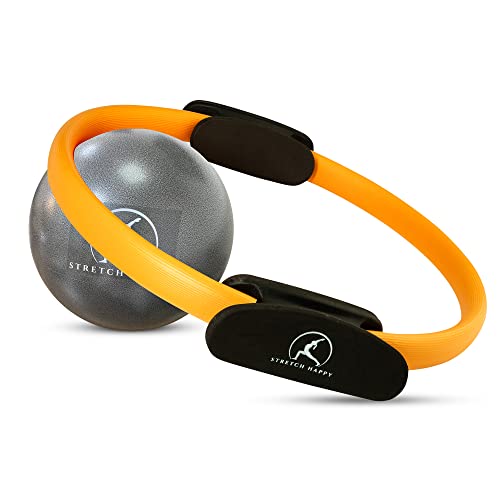
Get two hero pieces of equipment in this top-rated bundle - a reliable Pilates ring and a versatile Pilates ball.

Liven up your at-home workouts with this bright, high quality purple ring.

Take it from us - these are an absolute dream to workout in. Soft, squat-proof and perfectly stretchy, these are just like the Adanola ultimate leggings, but with a Pilates-inspired twist in the form of the stirrup legs.

Designed for low-impact workouts, this is a versatile Pilates top that delivers on comfort and practicality.

Add even more resistance to your workout with a reliable pair of ankle weights to up the intensity.
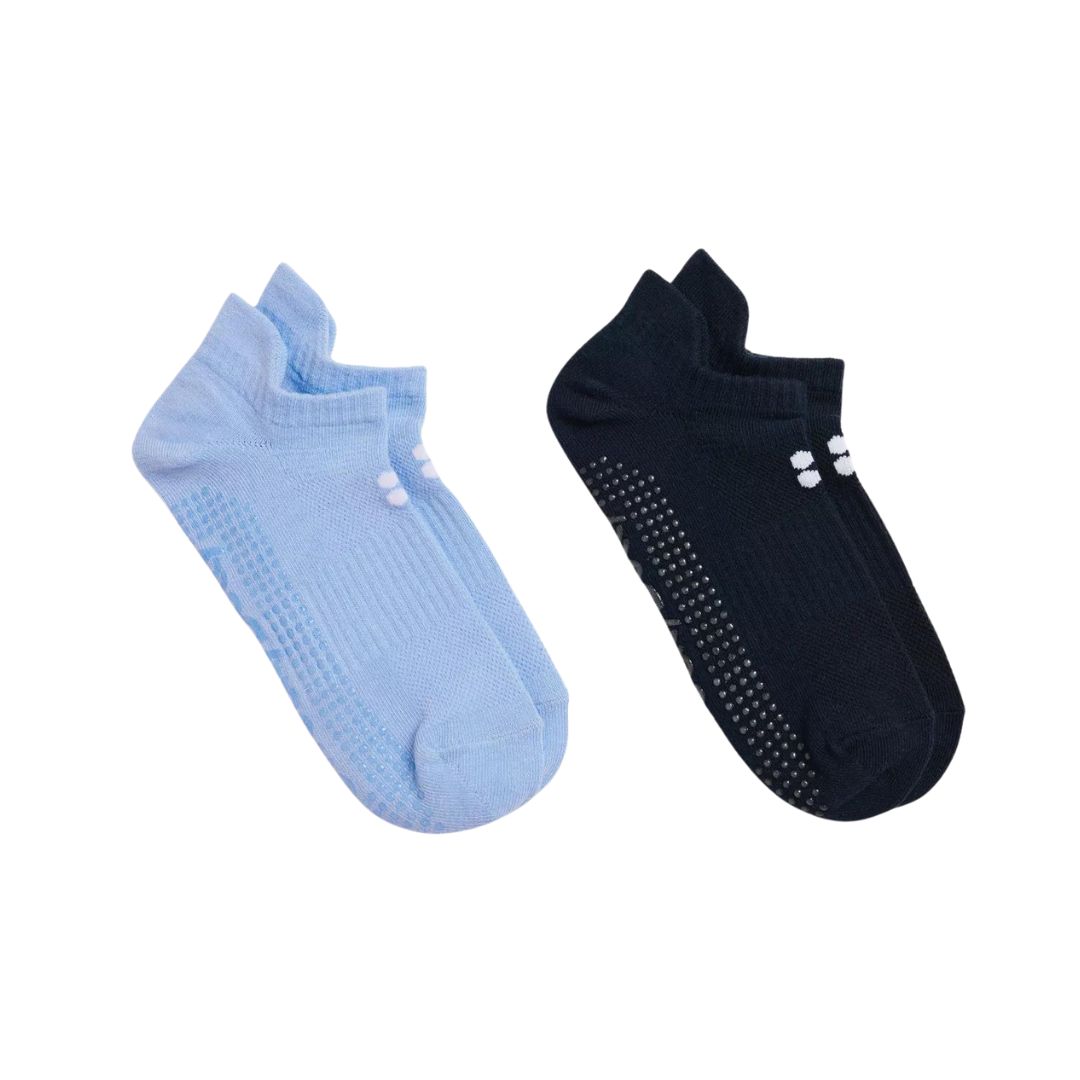
Sliding around in your workout? Try these grippy socks from Sweaty Betty. Designed for barre, they're just as good for Pilates, yoga and more.

Simulate Reformer moves on any surface with a pair of lightweight and portable sliders.

Anna Bartter is a freelance journalist who writes about health, fitness and women's lifestyle for publications including Stylist, Metro and Psychologies, among others.
She's always on a quest to find a variety of fun and functional workouts that give you the most bang for your workout buck and she's passionate about championing movement for everyone's mental and physical wellbeing.
-
 Here's a rundown of The White Lotus cast members who have dated in real life
Here's a rundown of The White Lotus cast members who have dated in real lifeBy Jenny Proudfoot
-
 All the coolest brides are wearing drop-waist wedding dresses this year
All the coolest brides are wearing drop-waist wedding dresses this yearWedding Special Minimalist, nostalgic, and universally flattering
By Clementina Jackson
-
 Anya Hindmarch has just launched a fantastical diving shop in central London
Anya Hindmarch has just launched a fantastical diving shop in central LondonFor those who would rather be beside the seaside...
By Sofia Piza
-
 Pink activewear is officially the must-wear trend of the season - 9 items our Health Editors can't stop wearing
Pink activewear is officially the must-wear trend of the season - 9 items our Health Editors can't stop wearingMake your workout even more fun with a pop of pink.
By Amelia Yeomans
-
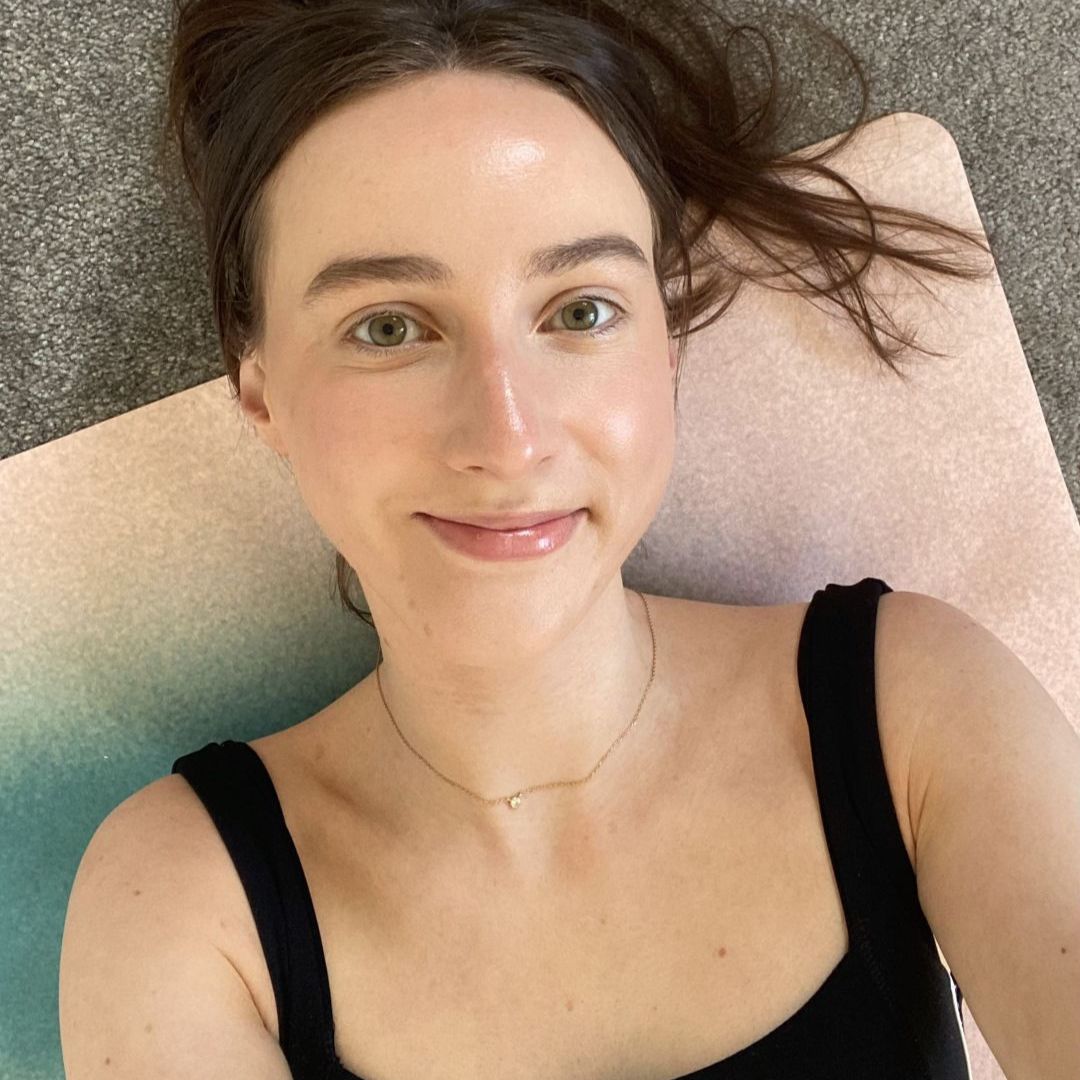 I tried Pilates scissors, the raved-about Pilates move - and think it's the best combination of stretching and strengthening ever
I tried Pilates scissors, the raved-about Pilates move - and think it's the best combination of stretching and strengthening everTrust me, this one's worth trying.
By Katie Sims
-
 Sustainable activewear brands are a great way to make your workout more conscious - 14 to have on your radar
Sustainable activewear brands are a great way to make your workout more conscious - 14 to have on your radarDo your bit and sweat in planet-friendly kit.
By Ally Head
-
 Power walking is the latest trending workout - and it promises to supercharge your health in the simplest way
Power walking is the latest trending workout - and it promises to supercharge your health in the simplest wayKeen to find out more? Step this way...
By Rebecca Shepherd
-
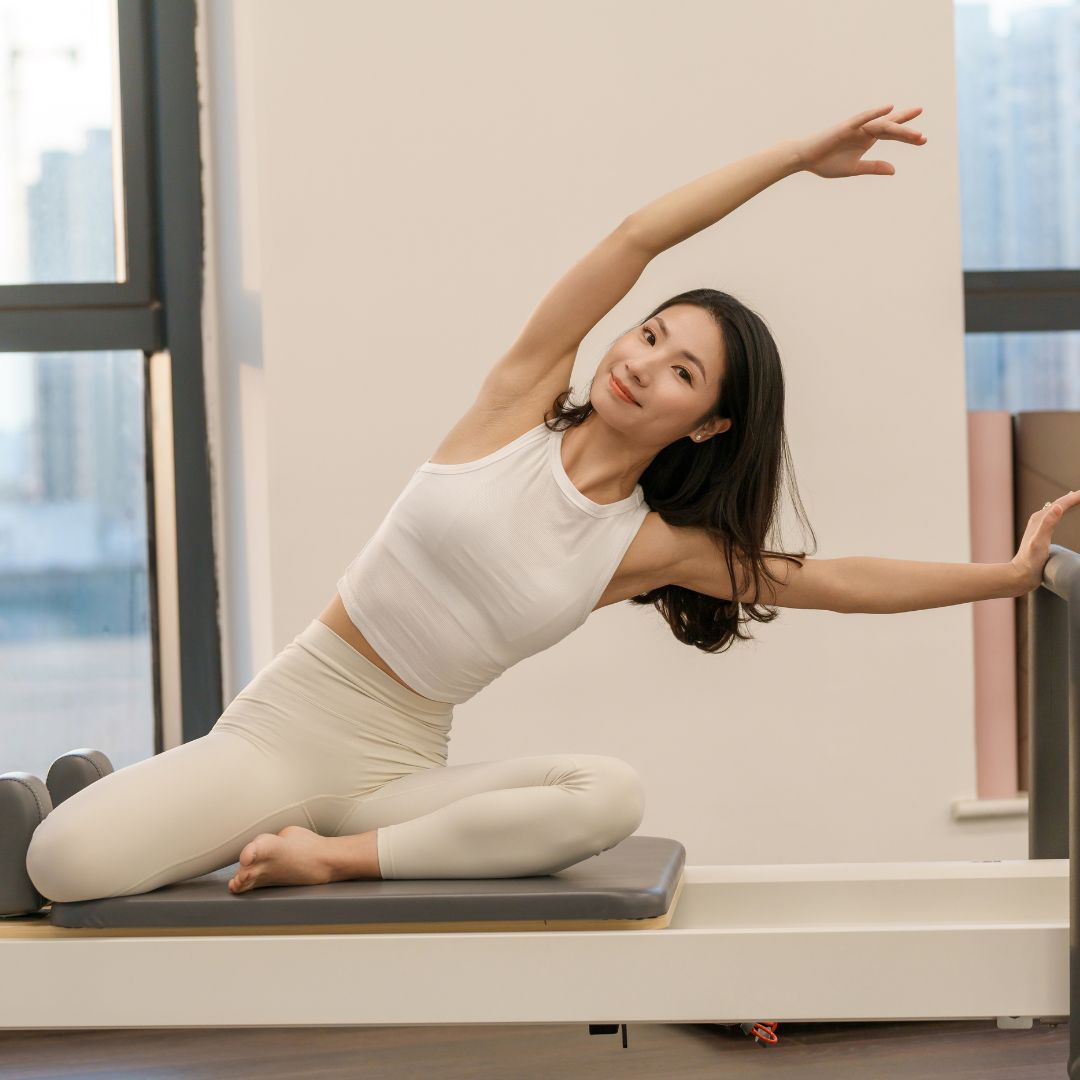 Eager to build a strong, stable core from home? 7 advanced Pilates core exercises that coaches do themselves
Eager to build a strong, stable core from home? 7 advanced Pilates core exercises that coaches do themselvesStability, strength *and* control? It's a yes from us.
By Anna Bartter
-
 Stuck for warm weather exercise gear? These 7 spring workout sets from our Editors' favourite brands have you covered
Stuck for warm weather exercise gear? These 7 spring workout sets from our Editors' favourite brands have you coveredDon't let sweat cramp your style.
By Amelia Yeomans
-
 Classical Pilates is raved about worldwide as the most effective type of Pilates you can do - 8 exercises that instructors recommend
Classical Pilates is raved about worldwide as the most effective type of Pilates you can do - 8 exercises that instructors recommendTried, tested and trusted moves.
By Katie Sims
-
 On the hunt for the best running shoes? I'm a Health Editor and marathon runner who's tested nearly 1000 pairs - my definitive pick for every distance and gait
On the hunt for the best running shoes? I'm a Health Editor and marathon runner who's tested nearly 1000 pairs - my definitive pick for every distance and gaitDon't be confused by the jargon - we've tried 100's of trainers and these are the ones worth investing in.
By Ally Head